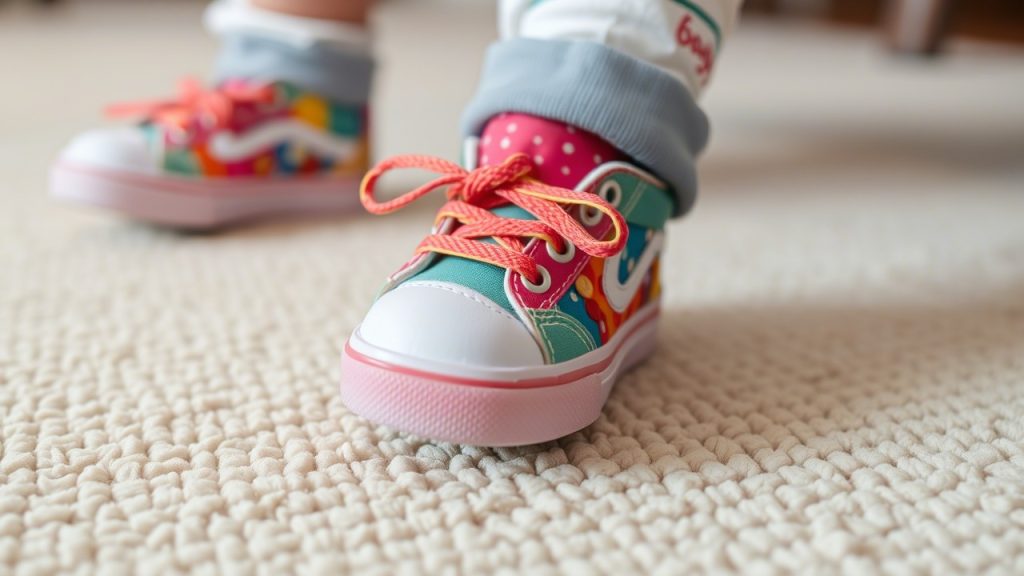Watching a toddler take their first confident steps is one of the most exciting milestones for any parent. However, good walking form doesn’t happen automatically. Proper footwear plays a crucial role in helping toddlers develop strong muscles, good posture, and a natural gait.
Choosing shoes that support healthy walking habits can set your child up for a lifetime of strong, steady movement. We’ll explore the 8 best toddler shoes to improve walking form, offer expert tips for choosing the right shoes, and answer 9 frequently asked questions to help you make the best decision for your little one.
Why the Right Shoes Are Essential for Toddler Walking Form
Toddlers’ feet are still developing. Bones are soft, arches are forming, and muscles are gaining strength. Wearing stiff, heavy, or poorly fitted shoes can interfere with natural foot motion, leading to poor walking mechanics that might persist over time.
The best shoes for improving walking form are:
- Lightweight: To allow natural movement
- Flexible: To let feet bend and flex
- Supportive but not restrictive: Offering a balance between freedom and protection
- Breathable: To keep little feet dry and comfortable
- Secure: So the shoe doesn’t slip or twist during walking
Choosing the right shoe encourages better posture, proper stride, and healthier muscle development.
8 Best Toddler Shoes to Improve Walking Form
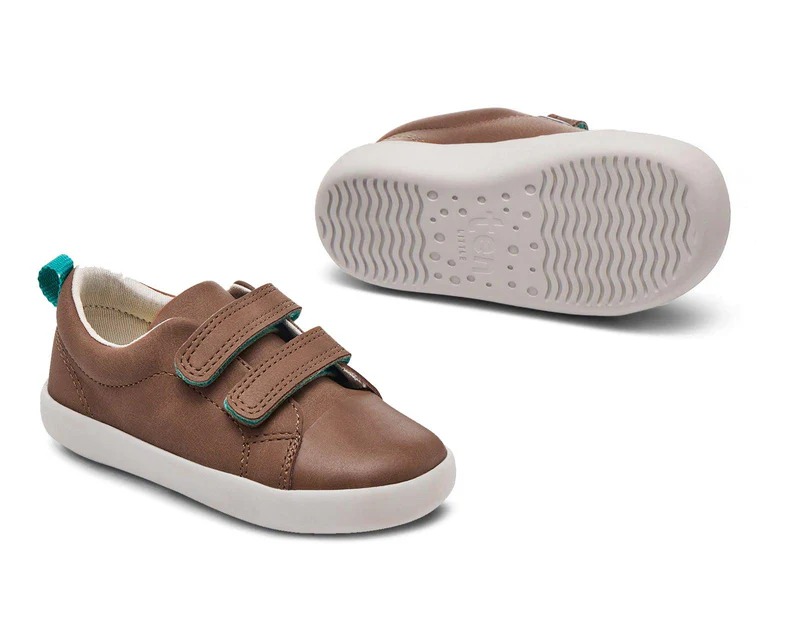
1. Stride Rite Soft Motion Artie Sneaker
Stride Rite’s Soft Motion line is designed specifically for first walkers, promoting healthy foot movement.
Key Features:
- Rounded soles to reduce stumbles
- Memory foam footbed for comfort
- Flexible rubber outsole
Why It’s Great for Walking Form: The rounded sole and flexible design help toddlers roll naturally through each step.
2. See Kai Run Stevie II First Walker
This shoe offers a flexible, supportive design that moves with your toddler’s foot.
Key Features:
- Flexible rubber outsole
- Breathable canvas upper
- Wide opening for easy dressing
Why It’s Great for Walking Form: The flexibility and lightweight structure encourage a natural stride without constriction.

3. Pediped Originals Adrian Sneaker
Designed for the early walking stage, Pediped Originals mimic the barefoot walking experience while providing protection.
Key Features:
- Soft, flexible leather sole
- Easy Velcro closure
- Lightweight design
Why It’s Great for Walking Form: These shoes allow toddlers’ feet to grip the ground and develop strength naturally.
4. Robeez Soft Soles
Robeez is famous for their soft-soled shoes, which are ideal for new walkers learning balance and coordination.
Key Features:
- Soft suede outsole
- Slip-on design with elasticized ankle
- Flexible leather upper
Why It’s Great for Walking Form: Soft soles let toddlers feel the ground, promoting better sensory feedback and muscle development.
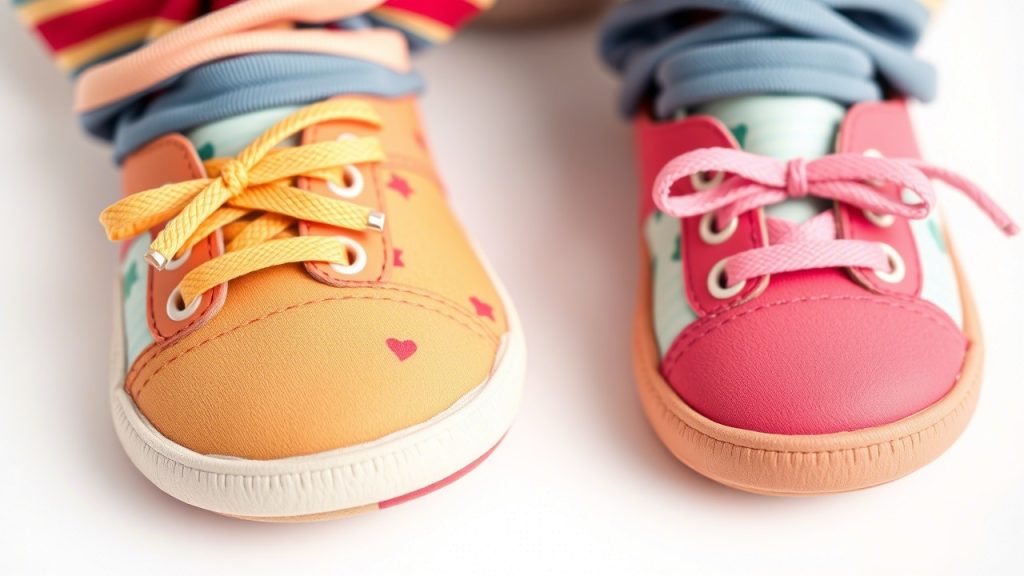
5. New Balance 574 Hook and Loop Sneaker
For toddlers who are a little steadier but still building skills, the New Balance 574 offers just enough support.
Key Features:
- Lightweight cushioning
- Hook and loop closure
- Durable rubber outsole
Why It’s Great for Walking Form: The combination of comfort and light structure helps toddlers maintain a steady gait without unnecessary bulk.
6. Tsukihoshi Racer Toddler Shoe
Tsukihoshi shoes are designed with healthy foot development in mind, offering orthopedic-friendly support.
Key Features:
- Ultra-lightweight design
- Wide toe box
- Machine washable
Why It’s Great for Walking Form: The wide toe box encourages natural toe splay, critical for balance and strong walking patterns.
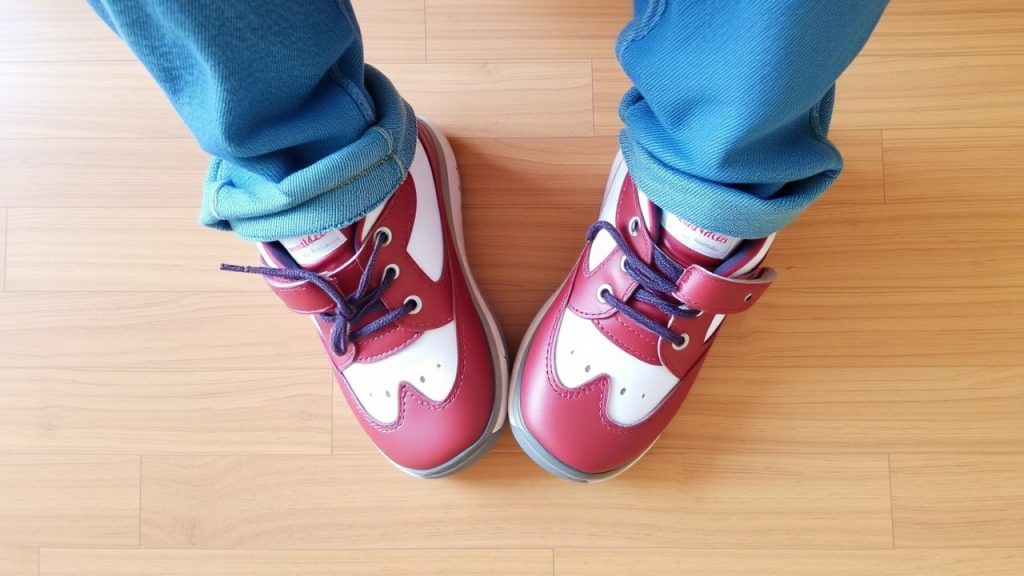
7. Merrell Bare Steps H2O
This water-friendly shoe promotes a barefoot feel while protecting little feet during outdoor adventures.
Key Features:
- Extra-wide toe box
- Super flexible sole
- Quick-dry material
Why It’s Great for Walking Form: Its ultra-flexible sole mimics barefoot walking, strengthening muscles and improving balance.
8. Livie & Luca Grip First Shoes
Livie & Luca’s Grip First collection is designed specifically to support proper form during the first stages of independent walking.
Key Features:
- Padded collar for comfort
- Flexible rubber outsole
- Velcro closure for easy fit
Why It’s Great for Walking Form: The thoughtful design protects developing feet while allowing natural movement and flexibility.
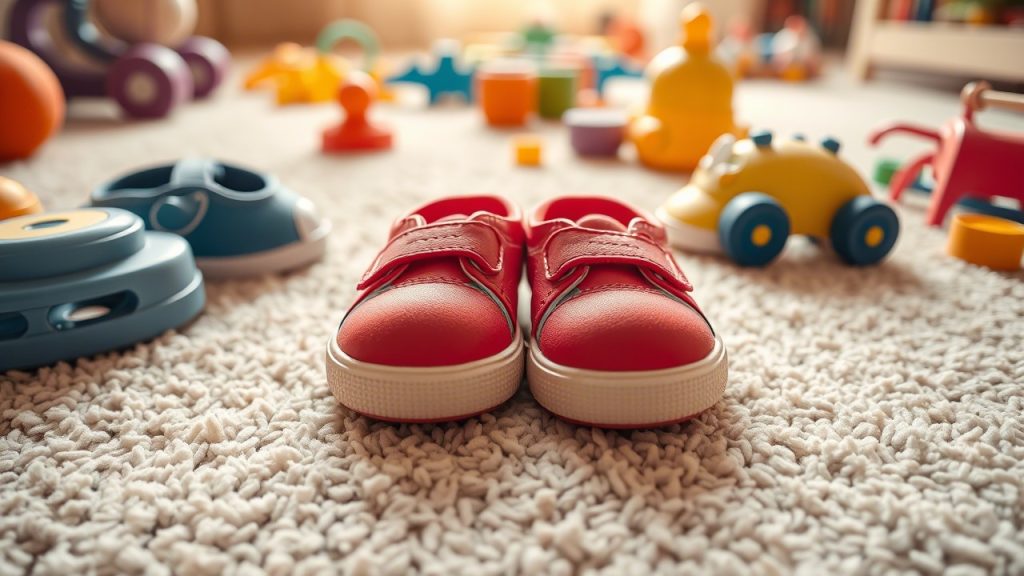
What to Look for When Choosing Toddler Shoes to Improve Walking Form
When picking shoes for better walking development, prioritize:
- Flexibility: Soles should bend easily at the ball of the foot.
- Lightweight Materials: Heavy shoes can throw off a toddler’s balance.
- Secure Fit: A snug heel and adjustable closures prevent slippage.
- Breathability: Materials like leather or mesh keep feet cool and dry.
- Room to Grow: Allow about a thumb’s width between the toe and the shoe’s front.
A shoe that supports natural movement is essential for toddlers learning to walk properly.
9 Frequently Asked Questions
1. Should toddlers learn to walk barefoot?
Yes, whenever safe and practical, walking barefoot helps toddlers develop balance, strength, and proper foot mechanics.
2. When should my toddler start wearing structured shoes?
Once your child is walking independently outdoors on uneven surfaces, structured shoes with flexible soles become important for protection.
3. How often should I replace toddler shoes?
Toddlers’ feet grow quickly. Check sizing every 6–8 weeks and replace shoes when they become too small, worn out, or tight.
4. Are high-top shoes better for early walkers?
Not necessarily. While high-tops can offer ankle protection, they shouldn’t restrict natural movement or flexibility.
5. Can stiff shoes affect my toddler’s walking?
Yes. Shoes that are too stiff can inhibit natural gait development, leading to poor walking form over time.
6. How can I tell if my toddler’s shoes fit properly?
There should be a thumb’s width of space between the longest toe and the end of the shoe, and the shoe should stay securely on the foot without slipping.
7. Are soft sole shoes safe for outdoor use?
Soft soles are best suited for indoor use or very smooth outdoor surfaces. For rougher terrain, a flexible but protective sole is better.
8. What’s the ideal shoe weight for toddlers?
The lighter the shoe, the better. Lightweight shoes allow for easier movement and don’t throw off balance.
9. Should toddler shoes have arch support?
Not necessarily. Toddlers’ arches are still developing, and most healthy toddlers do not need additional arch support unless recommended by a pediatrician.
Final Thoughts – Take the Right First Steps
Helping your toddler develop a strong, healthy walking form starts with the right shoes. Lightweight, flexible, and well-fitting footwear can boost their confidence, balance, and strength as they master the art of walking.
The 8 best toddler shoes to improve walking form listed here are designed to promote natural movement, support developing muscles, and make each step a little steadier. Investing in the right pair now can set your little one on a lifetime path of healthy, happy movement.
Every step matters — make them count!

